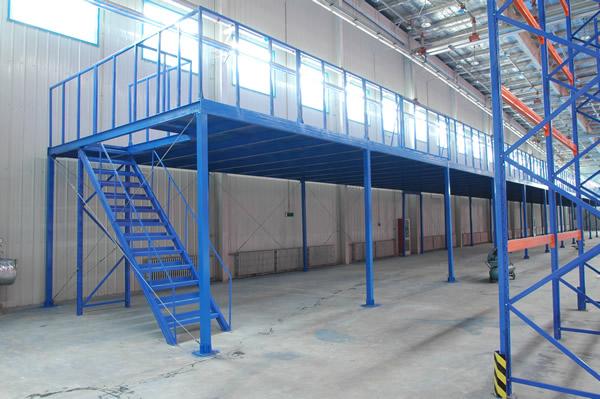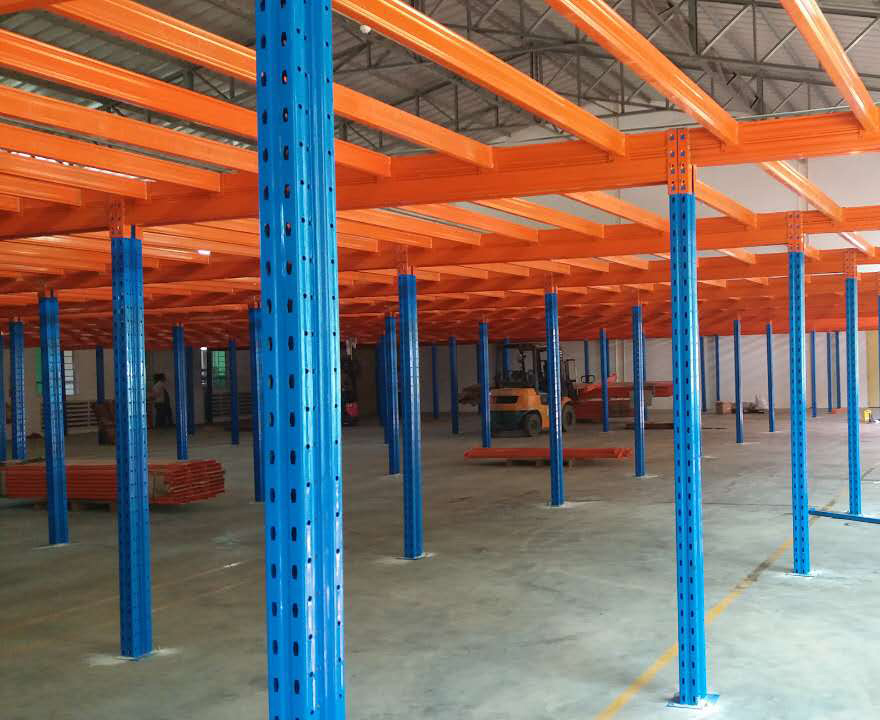If you're in the market for a high-density storage solution, you've likely identified push back racking as a potential fit. This system's dynamic nature, where pallets are stored on nested carts and slide back as new loads are added, offers a compelling blend of selectivity and space utilization. However, the performance, safety, and longevity of your push back pallet racking depend almost entirely on the company you choose to build and supply it. Not all push back pallet rack manufacturers operate with the same level of engineering rigor, material quality, or service support. Selecting the wrong partner can lead to operational headaches, safety risks, and costly downtime. This article outlines five essential factors you must evaluate to ensure you partner with a manufacturer who will deliver a reliable and high-performing system.

It's tempting to focus solely on the bottom line, but with push back pallet racking, the manufacturer's expertise is baked into the final product. This isn't simple shelving; it's a complex mechanical system. The precision of the cart wheels, the grade of steel in the frames and rails, and the accuracy of the structural calculations are what separate a flawless operation from a problematic one. A reputable manufacturer doesn't just sell components; they provide a integrated storage solution tailored to your specific load weights, forklift dynamics, and operational flow. The initial savings from a cut-rate supplier can quickly evaporate when faced with premature wear, component failure, or inadequate technical support.
This is the non-negotiable foundation. Any manufacturer you consider must have certified professional engineers (PEs) on staff or on retainer. These engineers are responsible for creating the system's load calculations and ensuring the design complies with all relevant standards.
What to Ask For: Always request a copy of the engineered site-specific layout and calculations. This document is your guarantee that the system has been designed for your exact warehouse environment and inventory loads.
Seismic Considerations: If your facility is in a region with seismic activity, the engineering requirements are even more stringent. The manufacturer must demonstrate experience in designing for these forces.
Load Testing Inquiries: Ask if they physically load-test their critical components, like the pallet carts, to verify their stated capacities beyond a theoretical margin of safety.
A manufacturer that is hesitant or unable to provide thorough engineering documentation is a significant red flag.
The durability of a push back racking system lives and dies by the quality of its parts. Two manufacturers might offer racks that look similar, but the differences in material and construction will determine how they perform over a 10 or 15-year lifespan.
Steel Grade and Gauge: Inquire about the grade of steel used for the structural frames and the roll-formed beams. Heavier gauge, high-strength steel resists impact and deformation better.
Cart Mechanism: The heart of the system is the push back cart. Examine the build quality. Are the wheels made from high-density, durable polymer? What is the design of the axle and bearing? A smooth-gliding, robust cart is critical for minimizing push-back effort for forklifts and preventing jams.
Finish and Coating: The paint finish isn't just about aesthetics; it's about corrosion resistance. A high-quality powder-coated finish, often applied after a phosphating pretreatment, will protect the steel from moisture and wear in a demanding warehouse environment.
Your storage needs today might not be your storage needs in five years. A leading manufacturer will offer design flexibility to adapt to future changes.
Beam Level Adjustability: Can the beam levels be easily relocated? Look for systems with a wide range of hole patterns (teardrop or keyhole) that allow for fine-tuning load heights without requiring specialized tools or additional parts.
Capacity Tiers: Do they offer different capacity ranges for their push back systems? You may have areas in your warehouse that require a medium-duty system and others that need a heavy-duty solution. A manufacturer with a broad product range can provide the most cost-effective option for each application.
Add-on and Accessories: Can the system be integrated with decking, pallet supports, or column guards? The ability to seamlessly add these accessories is a sign of a well-thought-out product ecosystem.
A manufacturer's past performance is the best predictor of your future experience. In the digital age, there's little excuse for not doing your homework.
Seek Case Studies: Look for detailed case studies on their website that describe projects similar in scale and complexity to yours.
Ask for References: A confident manufacturer will gladly connect you with past clients. Don't just get the references; call them. Ask about their experience with the installation process, post-sale support, and the long-term reliability of the system.
Industry Longevity: While new companies can be innovative, a manufacturer that has been in business for a decade or more has likely weathered various economic cycles and solved a wide array of customer challenges, proving their resilience and commitment.

The relationship with your push back pallet rack manufacturers shouldn't end when the purchase order is signed. The support they provide during and after installation is crucial.
Installation Support: Will they provide certified installers, or do they offer comprehensive installation manuals and on-site guidance for your chosen contractor? Poor installation can void warranties and create safety hazards.
Warranty Length and Scope: Read the warranty document carefully. What exactly is covered? The structural frame? The mechanical carts? For how long? A strong, multi-year warranty on both structure and components indicates the manufacturer stands behind their product's quality.
Parts Availability: How quickly can they ship a replacement cart or beam if one is damaged? A domestic manufacturing facility or well-stocked warehouse can be a huge advantage over a supplier with long lead times for critical components.
When you request quotes from various push back pallet rack manufacturers, ensure you are comparing apples to apples. The lowest quote may exclude essential items like engineering, freight, or specific accessories. A detailed quote should break down all costs, including:
All structural and mechanical components
Professional engineering stamps and drawings
Necessary accessories (decking, end-of-aisle guards)
Estimated delivery costs
Any potential installation support fees
Investing in a high-quality system from a reputable manufacturer may have a higher initial price, but it minimizes total cost of ownership through reduced maintenance, higher productivity, and enhanced safety.
Choosing among push back pallet rack manufacturers is a strategic decision that will impact your warehouse operations for years to come. By looking beyond the price per pallet position and critically evaluating a potential partner on their engineering depth, component quality, system flexibility, market reputation, and post-sale support, you can confidently select a manufacturer that will be a true partner in optimizing your storage infrastructure. The right choice ensures your push back racking system is a durable, efficient, and safe asset that drives value long after the installation is complete.
Q1: What is the typical lead time for a custom push back racking system from order to delivery?
A1: Lead times can vary significantly based on the manufacturer's backlog and the complexity of your order. For a standard system, expect 6 to 10 weeks. For highly customized projects or during periods of high demand, lead times can extend to 12-16 weeks. It's crucial to discuss this timeline early in the process with your chosen push back pallet rack manufacturers.
Q2: Can push back racking be used with any type of forklift?
A2: While most standard counterbalance and reach trucks can be used, efficiency is highest with a consistent and skilled operator. The system requires precise placement to avoid damaging the carts or rails. It is generally not recommended for use with inexperienced operators or certain types of rough-terrain forklifts.
Q3: How does the load capacity of a push back system compare to selective pallet racking?
A3: The load capacity per level in a push back system is typically very high and often comparable to selective racking. However, the capacity is limited by the strength of the individual push back carts, not just the beams. It's essential that the manufacturer's engineering specifies both the beam and the cart capacities for each level.
Q4: What kind of ongoing maintenance do push back systems require?
A4: Maintenance is generally minimal but critical. It involves regular visual inspections of the carts for debris or wheel wear, checking that all bolts are tight, and ensuring the structural frames remain plumb and undamaged. The manufacturer should provide a recommended maintenance checklist.
Q5: If we need to expand or reconfigure our system in the future, will the manufacturer be able to accommodate that?
A5: This is a key question to ask upfront. Reputable push back pallet rack manufacturers design their systems with modularity in mind and should be able to supply compatible components for future expansion. However, to ensure perfect compatibility, it is always best to plan for future needs with the original manufacturer.
 Wechat
Wechat
 Whatsapp
Whatsapp